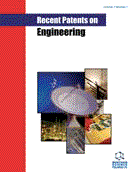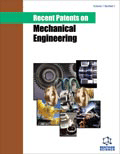Abstract
Background: The problem of assembly line balancing has become one of the most important research aspects. Recent relevant patents and researchers have found that how to look for a better method to improve the efficiency of assembly line is important.
Objective: The purpose of this study is to provide a novel approach for the assembly line balancing problem through integration of genetic algorithm and simulation analysis. Methods: In this study, the assembly line balancing problem of type-I is described and the mathematic model for assembly line balancing problem of type-I is established. Moreover, genetic algorithm is applied for optimizing the workstation operation time and simulation analysis method is used to explore the bottleneck workstations and potential bottleneck workstations. The key techniques of the proposed approach are elaborated and the flowchart is designed. Finally, an electric tapping machine assembly line balancing problem is taken as an industry application example to verify the proposed approach. Results: Simulation results show that the (potential) bottleneck workstations can be identified and the efficiency of assembly line can be improved. Conclusion: Through integration of genetic algorithm and simulation analysis, the efficiency of the electric tapping machine assembly line has been improved as well as improvement of the (potential) bottleneck workstations leads to reliability of the assembly line.Keywords: Assembly line balancing problem, genetic algorithm, plant simulation, stochastic task, endosymbiotic, integration.
Graphical Abstract
Recent Patents on Engineering
Title:A Novel Approach for the Assembly Line Balancing Problem through In-tegration of Genetic Algorithm and Simulation Analysis
Volume: 11 Issue: 1
Author(s): J. Peng, X. Liu and Z. Xu
Affiliation:
Keywords: Assembly line balancing problem, genetic algorithm, plant simulation, stochastic task, endosymbiotic, integration.
Abstract: Background: The problem of assembly line balancing has become one of the most important research aspects. Recent relevant patents and researchers have found that how to look for a better method to improve the efficiency of assembly line is important.
Objective: The purpose of this study is to provide a novel approach for the assembly line balancing problem through integration of genetic algorithm and simulation analysis. Methods: In this study, the assembly line balancing problem of type-I is described and the mathematic model for assembly line balancing problem of type-I is established. Moreover, genetic algorithm is applied for optimizing the workstation operation time and simulation analysis method is used to explore the bottleneck workstations and potential bottleneck workstations. The key techniques of the proposed approach are elaborated and the flowchart is designed. Finally, an electric tapping machine assembly line balancing problem is taken as an industry application example to verify the proposed approach. Results: Simulation results show that the (potential) bottleneck workstations can be identified and the efficiency of assembly line can be improved. Conclusion: Through integration of genetic algorithm and simulation analysis, the efficiency of the electric tapping machine assembly line has been improved as well as improvement of the (potential) bottleneck workstations leads to reliability of the assembly line.Export Options
About this article
Cite this article as:
Peng J., Liu X. and Xu Z., A Novel Approach for the Assembly Line Balancing Problem through In-tegration of Genetic Algorithm and Simulation Analysis, Recent Patents on Engineering 2017; 11 (1) . https://dx.doi.org/10.2174/1872212110666161125143326
| DOI https://dx.doi.org/10.2174/1872212110666161125143326 |
Print ISSN 1872-2121 |
| Publisher Name Bentham Science Publisher |
Online ISSN 2212-4047 |
 5
5 2
2 1
1
- Author Guidelines
- Bentham Author Support Services (BASS)
- Graphical Abstracts
- Fabricating and Stating False Information
- Research Misconduct
- Post Publication Discussions and Corrections
- Publishing Ethics and Rectitude
- Increase Visibility of Your Article
- Archiving Policies
- Peer Review Workflow
- Order Your Article Before Print
- Promote Your Article
- Manuscript Transfer Facility
- Editorial Policies
- Allegations from Whistleblowers
- Announcements





















